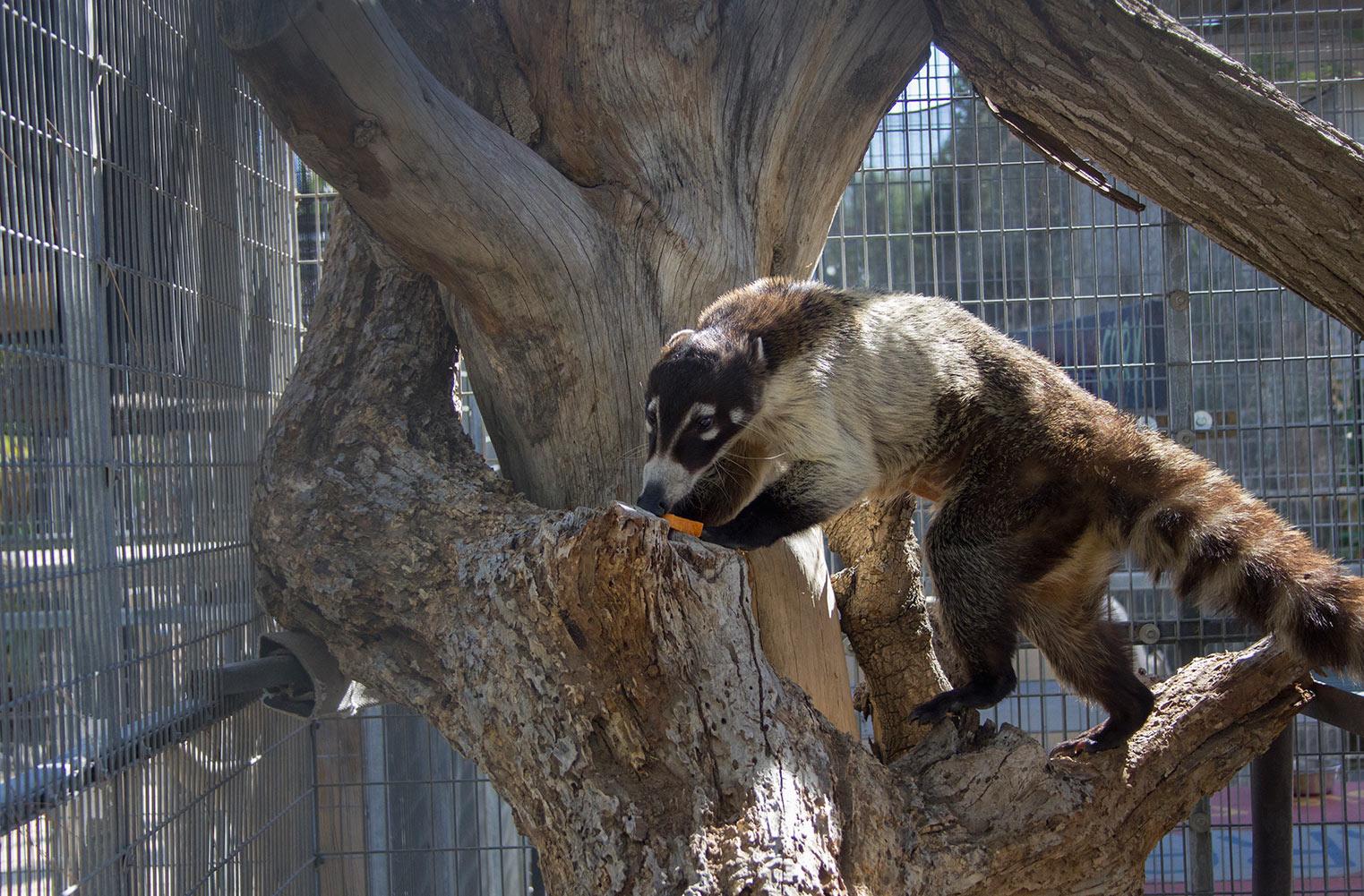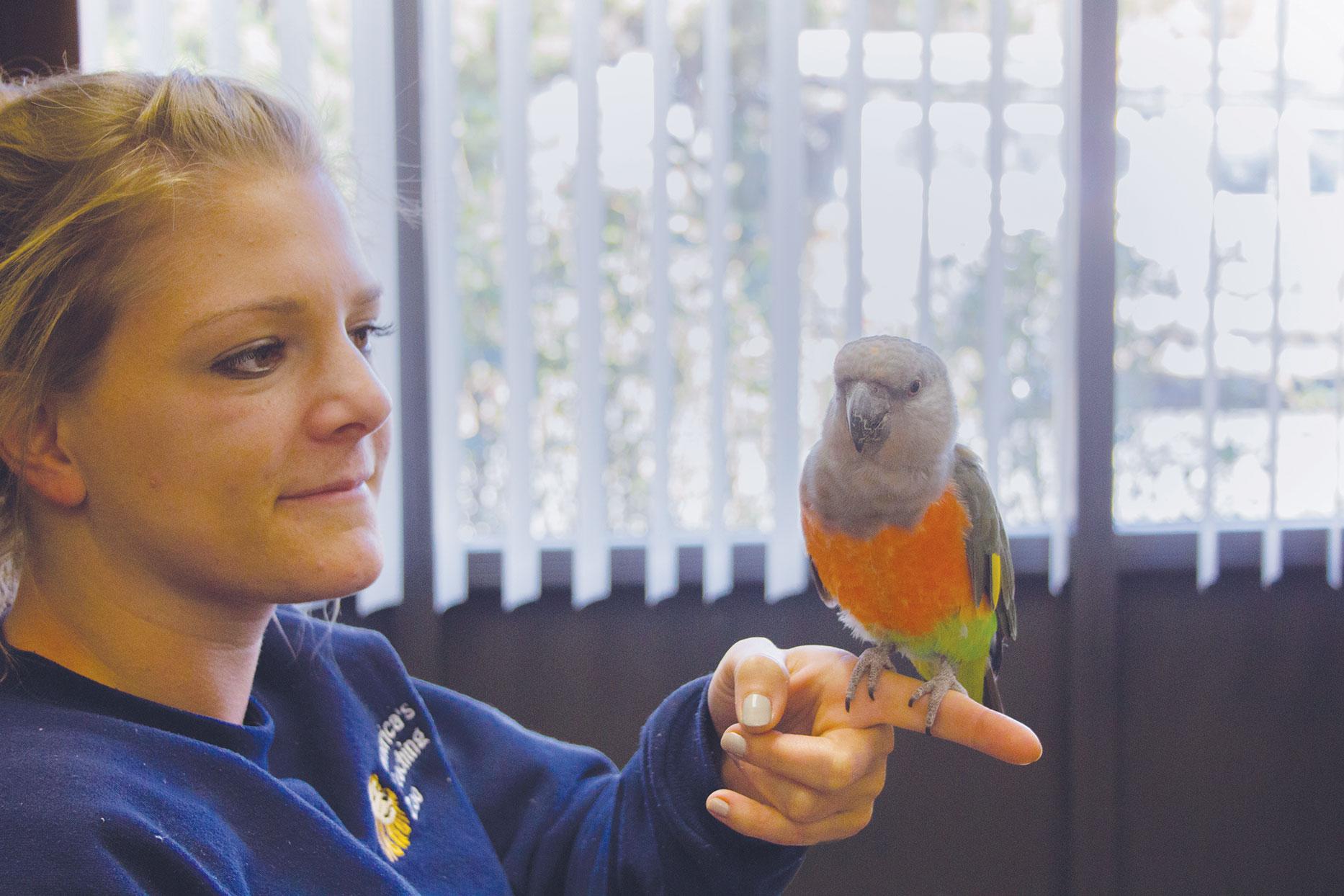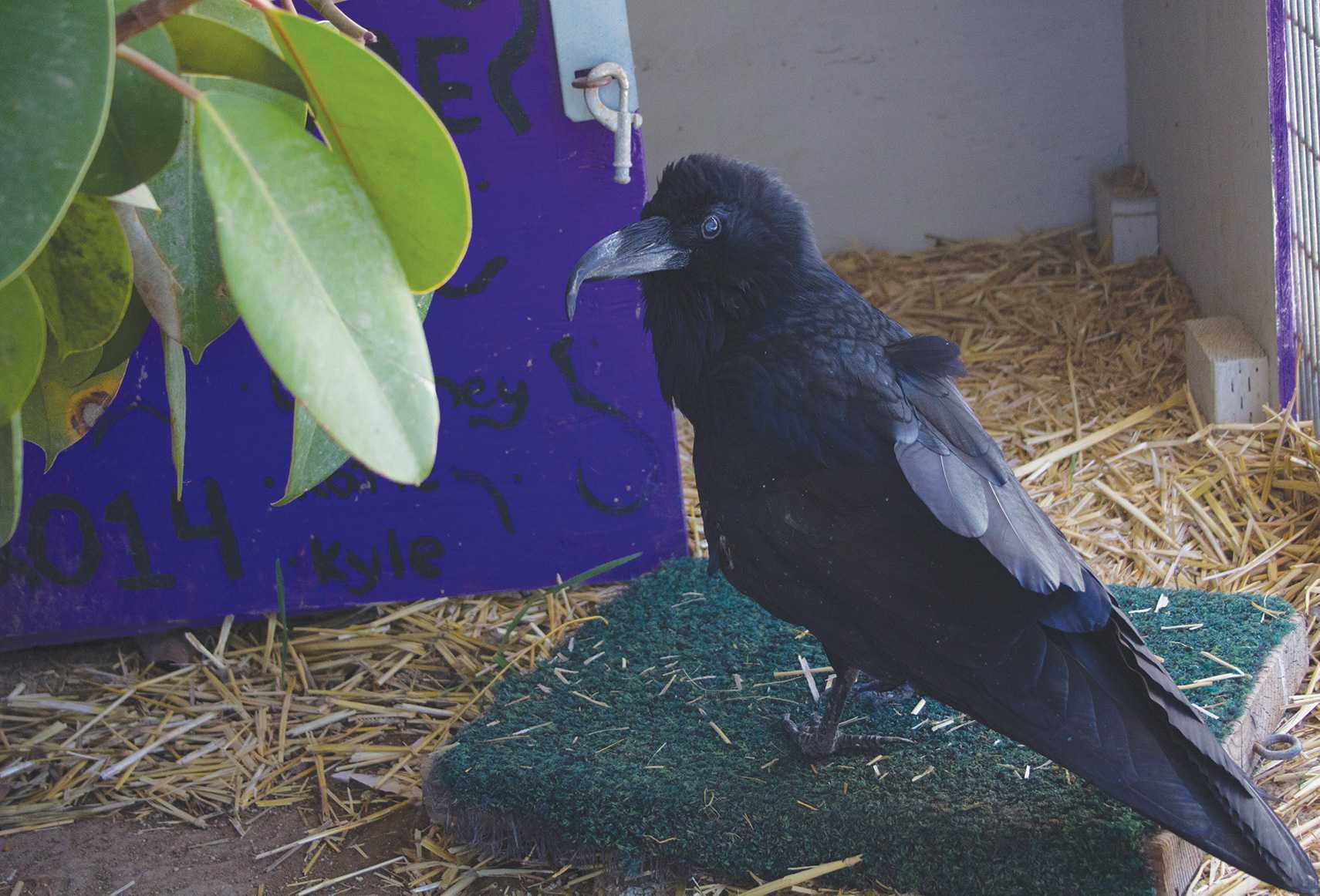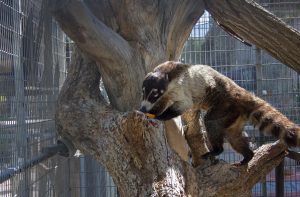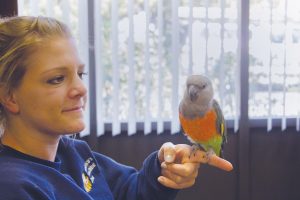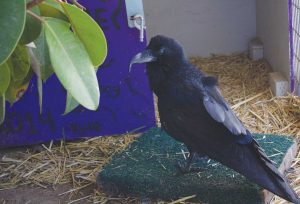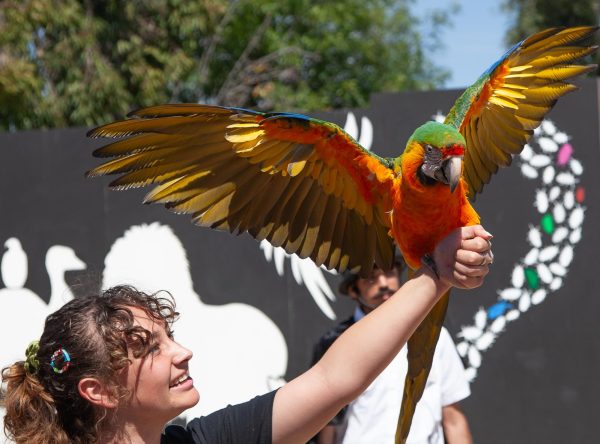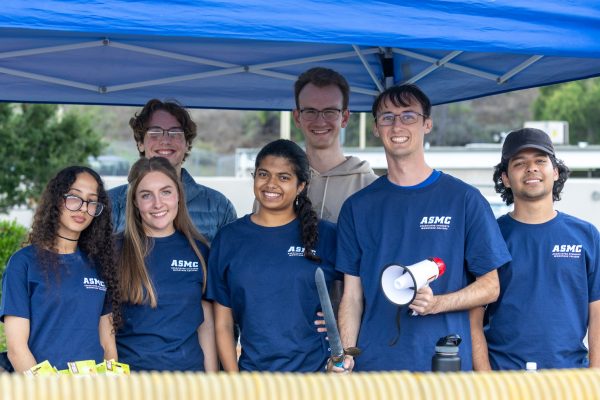MC welcomes new additions to its zoo
Wiley, Harvey and Baltimore join America’s Teaching Zoo at Moorpark College, adding to the catalog of unique and exotic animals for the EATM program.
Harvey, a two-year-old African red-bellied parrot came to Moorpark College from Simi Valley. Wiley, a five-year-old white-nosed coati, came from a facility in Florida that does outreach education. Baltimore, a nearly-blind raven, came from the Las Vegas Zoo.
The Las Vegas Zoo had a hard time finding a home for Baltimore once they closed due to funding. The task was difficult because few facilities have the proper permit to have ravens.
“The USDA specifically asked us to take him because they knew we would give him good care,” said Department Chair Brenda Woodhouse.
Baltimore currently lives in a cozy wooden box inside a larger enclosure. Since he has bad cataracts, he spends most of his time on the ground, hanging out on the various perches, feeling the different textures, listening, and sometimes talking. In addition to laughing, he has been known to say “hi,” “hello,” and “good boy.”
“It’s really important for his enclosure to remain the same, so he knows where everything is,” said EATM trainer Katie Verun.
Not far from Baltimore, Wiley the white-nosed Coati now has domestic dogs, red foxes, a skunk, a raccoon, a red-tailed hawk and dirt-eating pigs for neighbors. Wiley came to Moorpark College since he was no longer being used as much in Florida. Coatis are found everywhere in Central America and are similar to our raccoons, according to Woodhouse.
“He does what is called scent-marking,” said EATM trainer Tiana Blanco. “He’ll even do it to me. He’ll take the smell off me and put it on his tail.”
Harvey has found a new home in the zoo’s offices. This parrot is going through a transition period to live permanently outdoors and only spends a few hours a day outside; consequently, this means that he isn’t present in the noisy mornings when the rest of the birds wake up. He misses out on the squawks, calls and screams that the rest of the parrots let out to inform each other where they’re at, as they would do in the wild, says Woodhouse.
At the zoo, the students are the trainers. They’re responsible for the general well-being of the animals. They feed and train the animals, clean their enclosures and provide enrichment, such as giving them toys, spending time with them and putting food inside of objects to simulate foraging.
“It’s not enough to feed the animal, they need mental stimulation as well as physical stimulation,” said Woodhouse.
6:30 a.m. is feeding time at the zoo; that’s when the students arrive. First-year students are on location anywhere from 4-5 days a week, while second-year students can be there 6-7 days a week tending to the animals. It all depends on how many trainers an animal has. If a particular animal only has one trainer, then that trainer is there every day of the week.
“The students totally run this zoo,” said Woodhouse.
Come witness the newest additions to the EATM family for yourself. The zoo is open to the public on the weekends from 11 a.m. until 5 p.m. and animal presentations are at noon and 2 p.m.



